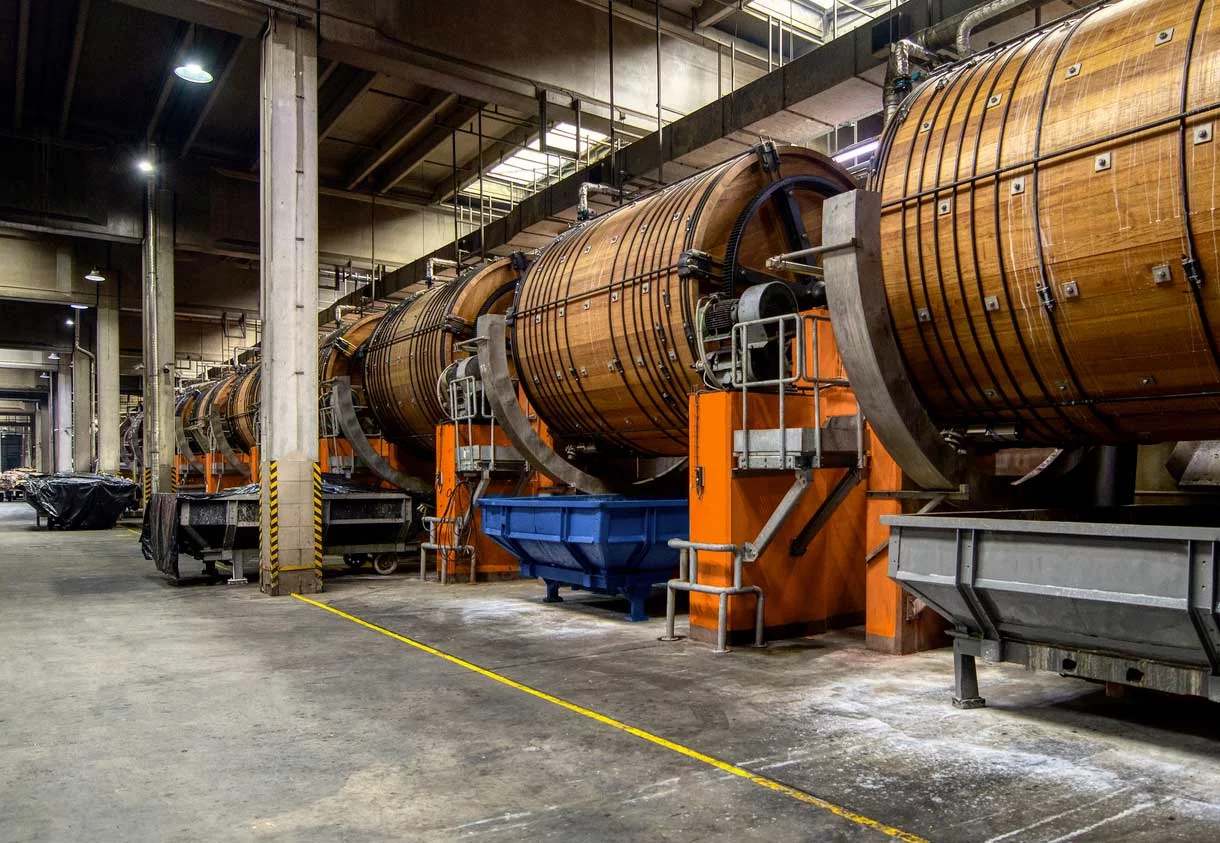We launched the current version of the LWG audit standard (P7) in 2021, marking a major advancement in our assessment of leather manufacturers and supporting a more sustainable and secure leather supply chain. This updated, holistic audit now emphasises a comprehensive ESG approach, encompassing all aspects of responsible leather manufacturing, including environmental management, traceability, chemical management, social responsibility, and governance.
Audit scope
The LWG Leather Manufacturer Audit Standard was designed to assess facilities processing leather from raw, crust, tanned material into pre-tanned, tanned, crust, or finished leather. You can view those operations here.
It covers 17 separate sections and certification is valid for two years. Learn more about its remit here.
- General Facility Details
- Subcontracted Operations
- Social Audit
- Operating Permits
- Production Data
- Incoming Material Traceability
- Outgoing Material Traceability
- Environment Management Systems (EMS)
- Restricted Substances, Compliance, and Chromium VI (CrVI) Management
- Energy Consumption
- Water Usage
- Air & Noise Emissions
- Waste Management
- Effluent Treatment
- Health, Safety, & Emergency Preparedness
- Chemical Management
- Operations Management

Social responsibility
Record of Changes
Changes from P7.2.2 (Rev1) to P7.2.2 (Rev2) – Updated on 29 November, 2022
Change effective from 01/04/2023 (1st April 2023)
Leather Working Group will enact a change to the data period required for facilities:
- Leather manufacturers undergoing their very first audit will from 01/04/2023 be able to present 12 months of data, in return for a 12-month certification.
- Leather manufacturers previously audited under LMAP P5 or earlier, undergoing a re-audit after a period of expiration, will from 01/04/2023 be able to present 12 months of data, in return for a 12-month certification.
If the facilities can present 24-months of data, they must do so to obtain a 24-month certificate.
Change effective immediately
Section | Change | ||
| Introduction |
| |
| S12 | Air & Noise Emissions |
| |
| S15 | Health and Safety | Q32 |
|
| Q34 |
| ||
Changes from P7.2.2 to P7.2.2 (Rev1) — Updated on 02 August 2022
Section | Change | |
Introduction |
| |
Changes from P7.2.1 to P7.2.2 — Updated on 01 July 2022
| Section | Question | Change | |
| Scope | Removal of requirement for exemption requests to be submitted to the TSG | ||
| Introduction | Scoring for awards: Additional clarification on the application of threshold questions to subcontractors assessed using this protocol | ||
S9 | Restricted Substances | Q13 | Levels of testing and points awarded revised |
| Q13 | Threshold for Gold medal rating removed | ||
| Q14 | Threshold for Gold medal rating removed | ||
Changes from P7.1.0 to P7.2.1 — Updated on 11 February 2022
| Section | Question | Change | |
Scope | pp ii, iii, v, vi, vii | iii | Text clarified |
| Opening statement | Q3 | new question relating to completeness of data presented | |
| S1 | General Facility Details | Q15 | Inclusion of transferable data (those who also undertake subcontracting) |
| S2 | Subcontract Operations | Q5 | Modified weighting table |
| S3 | Social Audit | Q2 | Modified requirements (current validity) |
| S4 | Operating Permits | Q4 | Amendment made from P7.2.0 to P7.2.1: Modification to penalties for serious violations & for the non-reporting of violations. |
| S6 | Traceability (Incoming) | Reference to the requirement to enter data into the Excel spreadsheet. | |
S7 | Traceability (Outgoing) | Q2 | Scoring correction |
| Q2 | No longer a threshold question | ||
S9 | Restricted Substances | Q6 | limits correction (chlorinated paraffins) |
| Q13 | Amendment made from P7.2.0 to P7.2.1: Clarification of the scoring for CrVI testing | ||
| Q19 | RSL for incoming chemicals removed | ||
| Q20 | Score modification (due to q19 change) | ||
| Q21 | Incoming chemicals RSL. Deleted. Subsequent questions renumbered | ||
S12 | Air Emissions | Q8 | Scoring correction |
| Q19 | Relaxed VOC emissions allowance | ||
S14 | Effluent Treatment | Q1 | 10 m3 volume limit requirement for metering extended to all ETPs |
| Q5 | Modification to analysis requirements (laboratory) based on treatment capacity of ETP | ||
| Q7 | Exemption for leathers that specifically require long-float processing | ||
| Q13 - 24 | Standardised discharge limits irrespective of treatment facility | ||
S16 | Chemical Management | Q23 | Clarification (relates to chemicals stored in production department) |
| Q23 | No longer a threshold question | ||
| S17 | Operations Management | Q5 | Clarification. Relates to chemicals in immediate vicinity of process vessel etc |
Changes to Section 5 — Updated on 27 May 2025
Updates to protocols
The threshold wording of Question 16, Section 5 (Production Data), has changed from a maximum of three suppliers to a maximum of 12 suppliers when evidence shows it is for trialing new suppliers; the 5% threshold for non-LWG material remains in place. Also, the introduction has been updated to remove the seven-day notice period for inspections; this wording now includes unannounced inspections in necessary cases.
CETP of Concern
CETP of Concern
| 18 July 2025 | Bantala CETP, Kolkata, India | Leather Working Group (LWG) has become aware of operational issues at the Central Effluent Treatment Plant (CETP) in Bantala, Kolkata India. In keeping with established practice, this situation has been reviewed by the LWG Technical Sub Group and the Board. Our decision as a result of these processes is that until we receive satisfactory evidence of compliant operation of the CETP and any corrective action that may be necessary, supported by independent verification, Leather Working Group has suspended the certification of the leather manufacturers to which this CETP is connected. | |
| 01 Sep 2023 | Savar and Hazaribagh area | LWG will not permit any audits to be undertaken in the area of Hazaribagh due to the relocation of tanners from this area, Due to the ongoing problems associated with the Central Effluent Treatment Plant (CETP) in Savar, LWG will not permit the auditing of any facility connected to that CETP. A facility located within the Savar CETP catchment that is not connected to it may be eligible for audit. The facility must demonstrate it has an independent effluent treatment plant of sufficient capacity for the treatment of the effluent produced and be able to provide test reports and records to show legal discharge of effluent and disposal of all wastes. | |
| 26 January 2022 | Challawa, Sharada, and Bompai industrial areas of Kano, Nigeria | The reason for adding these areas as being of concern is an article published in EnviroNews Nigeria entitled “NESREA seals 12 industries in Kano, five in Adamawa, two in Kwara” accessible via https://www.environewsnigeria.com/nesrea-seals-12-industries-in-kano/. It is understood that some tanneries have their own WWTP so it is not a blanket ban, only for those discharging to a CETP. Any proposed audit of a tannery in one of the three industrial areas indicated should first be approved by LWG. | |

